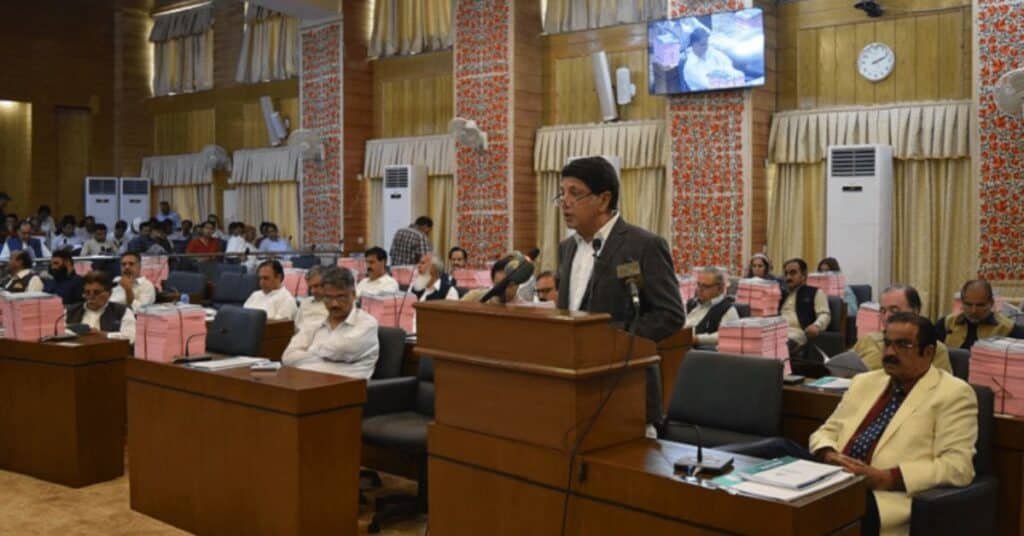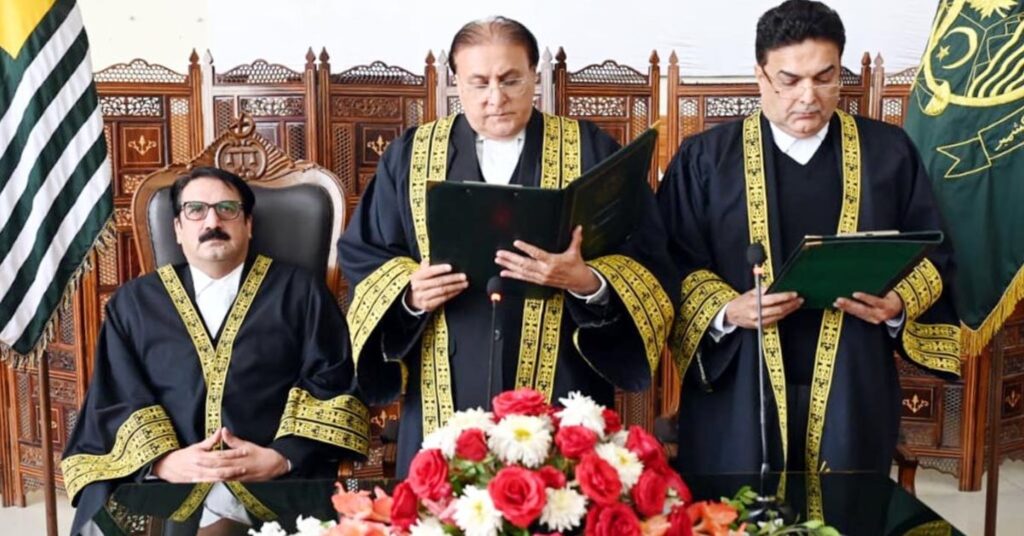By: Zulfiqar Ali (Kashmir Investigation Team)
MUZAFFARABAD: The Azad Kashmir Legislative Assembly last month approved a budget of Rs 310 billion for Fiscal Year 2025-26, which is double the Gilgit-Baltistan budget of Rs 148 billion.
The Azad Kashmir government allocated Rs44 billion for the development budget and Rs261 billion for non-development expenses. But, on the other hand, the Gilgit-Baltistan government allocated Rs37 billion for development projects and Rs111 billion for non-development expenses.
The budget expenses show the Azad Kashmir government’s large spending on administrative purposes, in comparison to Gilgit-Baltistan.
In terms of geographical area, Gilgit-Baltistan is very large, spread over about 73,000 square kilometers. In comparison, Azad Jammu and Kashmir has an area of only 13,000 square kilometers.
Gilgit-Baltistan has a population of about 2.1 million, but its vast and difficult mountainous terrain creates difficulties in the delivery of government services.
On the other hand, Azad Jammu and Kashmir has a population of about 2.7 million, and its relatively small geographical area makes it easier to provide government services. Azad Kashmir has a 53-member assembly, while Gilgit-Baltistan has 33 members.
Azad Kashmir has a prime minister, 31 ministers, 2 advisors, and two special assistants, while Gilgit-Baltistan has only 12 ministers and two advisors. The difference in the number of government employees is also clear. Gilgit-Baltistan has about 56,000 government employees, while Azad Jammu and Kashmir has more than 120,000 employees, double that of GB.
This means that due to the large administrative machinery of Azad Jammu and Kashmir, a large part of its budget is spent on salaries and allowances. In the FY 2025-26, the Azad Kashmir government will spend Rs105 billion on salaries and allowances alone, while Gilgit-Baltistan has allocated Rs60 billion for this.
Gilgit-Baltistan has allocated Rs 37 billion for its development budget, while Azad Jammu and Kashmir has allocated Rs 44 billion. However, this does not include the Rs 9 billion allocated by the Pakistani government for the construction of three Daanish schools in Azad Kashmir, nor the billions of rupees that are being spent on ongoing projects by the federal government.
Although AJK has received significant financial assistance over the past several years, it has not seen any significant or significant change as a result of this assistance. Infrastructure deficiencies and a lack of basic services in rural and remote areas still exist.
A large portion of the budget in Azad Jammu and Kashmir is spent on its unnecessarily large administrative structure.
On the other hand, Gilgit-Baltistan, despite its limited resources, is running its administrative structure more effectively and strategically, which is in keeping with its difficult geographical conditions.




